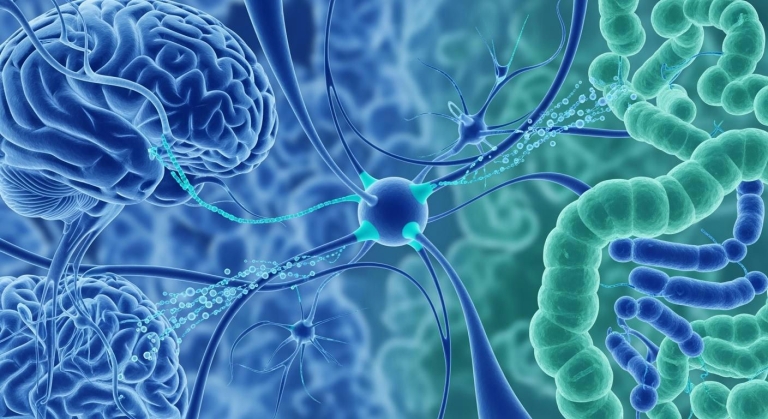Understanding Gallbladder Health: Prevention, Symptoms, and Treatment Options
Understanding Gallbladder Health: Prevention, Symptoms, and Treatment Options
Nestled in the right upper quadrant of your abdomen, just beneath your liver, sits a small, pear-shaped organ that many never think about until it causes problems—your gallbladder. This unassuming organ plays a crucial role in digestion by storing bile produced by your liver, yet gallbladder issues affect millions of Canadians each year.
At Care& Family Health, we see many patients who only learn about their gallbladder when experiencing sudden, intense pain or other concerning symptoms. Understanding this organ’s function and recognizing early warning signs can help you maintain better digestive health and potentially avoid medical emergencies.
This comprehensive guide explores everything from the basics of gallbladder function to dietary strategies for prevention, symptom recognition, and modern treatment options available in Toronto. Whether you’re currently experiencing symptoms or simply want to be proactive about your digestive health, this information will help you make informed decisions about your care.
Table of Contents
- What Is the Gallbladder and Why Does It Matter?
- Common Gallbladder Conditions
- Risk Factors for Gallbladder Issues
- Recognizing Gallbladder Problem Symptoms
- When to Seek Immediate Medical Attention
- Diagnostic Approaches for Gallbladder Issues
- Dietary Guidelines for Gallbladder Health
- Prevention Strategies Beyond Diet
- Treatment Options: From Conservative to Surgical
- Life After Gallbladder Removal
- The Role of Stress in Gallbladder Health
- Supporting Your Gallbladder Health in Toronto
- Taking the Next Steps
- FAQs About Gallbladder Health
- Conclusion: A Proactive Approach to Gallbladder Health
What Is the Gallbladder and Why Does It Matter?
The gallbladder serves as a storage reservoir for bile—a digestive fluid produced by your liver that helps break down fats during digestion. When you eat, especially foods containing fat, your gallbladder contracts to release bile into the small intestine through a system of ducts.
While not essential for survival (many people live normally after gallbladder removal), this organ plays an important role in efficient digestion. Problems typically arise when:
- Bile becomes too concentrated, forming gallstones
- Inflammation develops in the gallbladder (cholecystitis)
- Bile ducts become blocked
- Gallbladder function becomes impaired
Understanding these conditions and their warning signs can help you seek appropriate care before complications develop.
Common Gallbladder Conditions
Gallstones (Cholelithiasis)
Gallstones are hardened deposits of digestive fluid that can form in your gallbladder. They range in size from as small as a grain of sand to as large as a golf ball. Some people develop just one gallstone, while others develop many simultaneously.
In Canada, approximately 20% of women and 10% of men over 60 have gallstones, though many never experience symptoms. When these stones block the flow of bile, however, they can cause significant pain and complications.
Cholecystitis (Gallbladder Inflammation)
Acute cholecystitis typically occurs when gallstones block the tube leading out from your gallbladder, causing bile to build up and triggering inflammation. Chronic cholecystitis develops from repeated episodes of mild inflammation that damage gallbladder walls and impair function over time.
Biliary Colic
This refers to the pain that results when a gallstone temporarily blocks the cystic duct but then moves, allowing bile flow to resume. The pain can be severe but typically resolves once the blockage clears.
Gallbladder Polyps
These are growths that protrude from the gallbladder’s inner wall. Most are benign and don’t cause symptoms, but larger polyps may increase the risk of gallbladder cancer.
Gallbladder Cancer
Though rare, gallbladder cancer is often not diagnosed until advanced stages because it typically causes no specific signs or symptoms in its early stages.
Care& App Feature: Track Your Digestive Symptoms
Monitor patterns in your digestive health using the Care& Health Metrics tracking system. Record symptoms, track dietary triggers, and share accurate information with your healthcare provider during appointments.
Risk Factors for Gallbladder Issues
Certain factors increase your likelihood of developing gallbladder problems:
Factors You Can’t Control
- Being female: Women are twice as likely as men to develop gallstones.
- Age: Risk increases after age 40.
- Family history: Gallstones tend to run in families.
- Indigenous heritage: First Nations populations have higher rates of gallstones.
- Previous gallbladder issues: If you’ve had gallbladder problems before, you’re more likely to have them again.
Factors You Can Influence
- Body weight: Being overweight or obese increases risk.
- Rapid weight loss: Losing weight too quickly can trigger stone formation.
- Sedentary lifestyle: Regular exercise appears protective.
- Diet high in fat and cholesterol: This can increase bile cholesterol.
- Diet low in fiber: Fiber helps prevent gallstone formation.
- Diabetes: Associated with higher gallstone risk.
- Certain medications: Including some cholesterol-lowering drugs and hormone therapy.
Recognizing Gallbladder Problem Symptoms
Gallbladder issues can manifest in various ways, from subtle digestive complaints to sudden, severe pain. Being able to recognize these symptoms can help you seek appropriate care promptly.
Classic Gallstone Attack Symptoms
- Sudden, intensifying pain in the upper right or center of your abdomen
- Pain that radiates to your right shoulder or back
- Pain lasting from several minutes to a few hours
- Pain that often starts after meals, particularly fatty ones
- Nausea and vomiting
- Fever or chills (indicating possible infection)
- Yellowing of skin and whites of eyes (jaundice)
More Subtle Signs That Shouldn’t Be Ignored
- Digestive discomfort after eating fatty foods
- Ongoing gas, bloating, or indigestion
- Intolerance to fatty foods or feeling unusually full after meals
- Chronic diarrhea (can occur when bile continuously drips into the intestines)
- Light-colored or chalky stools
- Dark urine despite adequate hydration
Nurse Practitioners at Care& Family Health are trained to recognize these symptoms and can help determine if your symptoms warrant further investigation through appropriate testing.
When to Seek Immediate Medical Attention
Some gallbladder symptoms require urgent evaluation. Seek immediate medical care if you experience:
- Severe abdominal pain that prevents you from sitting still or finding a comfortable position
- Abdominal pain lasting more than 5 hours
- Pain accompanied by fever over 38.3°C (101°F)
- Yellowing of your skin or the whites of your eyes
- Severe nausea and vomiting that prevents you from keeping any food or liquids down
While these symptoms don’t always indicate a medical emergency, they require prompt evaluation to rule out serious complications like gallbladder rupture or bile duct infection, which can be life-threatening if left untreated.
If you experience these symptoms during regular office hours, contact your healthcare provider immediately. After hours, consider visiting an emergency department, especially if the pain is severe or accompanied by fever or jaundice.
Diagnostic Approaches for Gallbladder Issues
If you’re experiencing symptoms suggestive of gallbladder problems, your healthcare provider may recommend several diagnostic approaches:
Physical Examination
A thorough physical exam can reveal important clues, including:
- Tenderness in the upper right abdomen
- Murphy’s sign (pain when pressing on the gallbladder area during inhalation)
- Jaundice (yellowing of skin and eyes)
- Fever indicating possible infection
Laboratory Tests
Blood tests can help identify inflammation, infection, or bile duct obstruction:
- Complete blood count (CBC) to check for infection
- Liver function tests to assess for bile duct blockage
- Lipase and amylase levels to rule out pancreatitis
- Bilirubin levels, which elevate with bile duct obstruction
Imaging Studies
- Ultrasound: Usually the first imaging test, as it’s non-invasive and can effectively visualize gallstones and inflammation.
- CT scan: Provides detailed images and can help detect complications.
- Magnetic resonance imaging (MRI): Can provide detailed images of the biliary tract.
- Hepatobiliary iminodiacetic acid (HIDA) scan: Evaluates gallbladder function by tracking the production and flow of bile.
- Endoscopic retrograde cholangiopancreatography (ERCP): Combines endoscopy and X-rays to diagnose and sometimes treat bile duct problems.
At Care& Family Health, our Nurse Practitioners can order these diagnostic tests and coordinate with appropriate specialists when necessary, ensuring you receive comprehensive care for accurate diagnosis.
Care& Health Records: Access Your Test Results Anytime
View your lab results, imaging reports, and clinical notes securely through the Care& app. No more waiting for phone calls or follow-up appointments to learn your test results. Our digital health records give you access to your information when you need it.
Dietary Guidelines for Gallbladder Health
What you eat plays a crucial role in gallbladder health. Whether you’re trying to prevent gallstones or manage existing gallbladder issues, these dietary guidelines can help:
Foods to Emphasize
- High-fiber foods: Fruits, vegetables, whole grains, and legumes can help reduce the risk of gallstone formation.
- Healthy fats: Small amounts of olive oil, avocados, nuts, and fatty fish provide essential nutrients without overworking your gallbladder.
- Lean protein sources: Chicken, turkey, fish, tofu, and legumes are easier on your digestive system.
- Plant-based foods: Vegetarian diets are associated with lower rates of gallbladder disease.
- Regular meals: Eating on a consistent schedule helps regulate bile production and release.
- Water: Staying well-hydrated helps maintain proper bile consistency.
Foods to Limit or Avoid
- Fried and fatty foods: These require more bile to digest and can trigger gallbladder attacks.
- High-cholesterol foods: Excessive dietary cholesterol can contribute to stone formation.
- Refined carbohydrates: White bread, pasta, and sugary foods may increase gallstone risk.
- Full-fat dairy: Opt for low-fat or non-fat alternatives.
- Highly processed foods: These often contain unhealthy fats and additives that can stress your digestive system.
- Very large meals: These can trigger gallbladder contractions and pain.
Sample Meal Plan for Gallbladder Health
Breakfast:
- Steel-cut oatmeal with berries and a sprinkle of ground flaxseeds
- Herbal tea or water
Lunch:
- Lentil soup with spinach and carrots
- Whole grain bread (small portion)
- Fresh fruit
Snack:
- Apple slices with a small amount of almond butter
- Water with lemon
Dinner:
- Baked salmon with dill
- Steamed broccoli and quinoa
- Mixed green salad with olive oil and lemon dressing
Evening:
- Chamomile tea
- Small handful of unsalted almonds if hungry
The FODMAP Connection
Some research suggests that certain fermentable carbohydrates (FODMAPs) may trigger digestive symptoms in people with gallbladder issues. Working with a healthcare provider to identify potential trigger foods through an elimination diet can sometimes help manage symptoms.
At Care&, our healthcare team can provide personalized dietary recommendations based on your specific gallbladder condition and overall health needs.
Prevention Strategies Beyond Diet
While diet plays a major role in gallbladder health, other lifestyle factors are equally important for prevention:
Maintain a Healthy Weight—Gradually
Being overweight increases your risk of gallstones, but rapid weight loss can also trigger their formation. If you need to lose weight:
- Aim for gradual weight loss (1-2 pounds per week)
- Avoid crash diets or extreme calorie restriction
- Work with a healthcare provider to develop a safe weight loss plan
Stay Physically Active
Regular exercise helps maintain a healthy weight and may reduce gallstone risk by:
- Improving cholesterol levels
- Enhancing gallbladder emptying
- Reducing inflammation throughout the body
Even moderate activity like walking 30 minutes daily can make a difference.
Consider Preventive Medications
For those at very high risk, some medications may help prevent gallstones:
- Ursodiol (Actigall, Urso) can prevent gallstones during rapid weight loss
- Discuss with your healthcare provider if you have multiple risk factors
Schedule Regular Check-ups
Regular health assessments allow for early detection of potential issues before they become serious problems. At Care& Family Health, our unrushed appointments give you time to discuss preventive strategies specific to your risk factors.
Preventive Health Checks
Regular assessments can catch gallbladder issues early, before they become serious problems.
Track Symptoms Digitally
Use the Care& app to monitor your digestive health patterns and share insights with your healthcare provider.
Treatment Options: From Conservative to Surgical
When gallbladder problems do develop, various treatment approaches are available:
Conservative Management
For mild or occasional symptoms:
- Dietary modifications to reduce fat intake
- Pain management with over-the-counter or prescription medications
- Regular monitoring to track any progression of the condition
- Watchful waiting for asymptomatic gallstones, which often require no treatment
Medication-Based Treatments
For suitable candidates:
- Bile acid medications like ursodiol can sometimes dissolve small gallstones, though this process takes months and stones often recur
- Anti-inflammatory medications to manage pain and inflammation
- Antibiotics if infection is present
Minimally Invasive Procedures
- Endoscopic retrograde cholangiopancreatography (ERCP) can remove stones from bile ducts
- Lithotripsy uses shock waves to break up stones (less commonly used and not suitable for all patients)
Surgical Options
- Laparoscopic cholecystectomy: The most common treatment, involving removal of the gallbladder through small incisions. Recovery typically takes 1-2 weeks.
- Open cholecystectomy: Traditional surgery through a larger incision, usually reserved for complicated cases. Recovery takes 4-6 weeks.
In Toronto, these surgical procedures are widely available and typically covered by OHIP. Your healthcare provider can refer you to an appropriate surgeon if needed.
Life After Gallbladder Removal
Many patients worry about how life will change after gallbladder removal. The good news is that most people adapt well and experience few long-term effects:
What to Expect
- Initial dietary adjustments: Some people experience looser stools or more frequent bowel movements initially.
- Gradual normalization: For most, digestion normalizes within a few weeks or months.
- Continued bile production: Your liver still produces bile, but it flows continuously into your intestine rather than being stored.
Long-term Dietary Considerations
- Smaller, more frequent meals may be easier to digest
- Gradually reintroduce fats to determine your tolerance
- Stay hydrated to help with digestion
- Consider a food journal to identify any trigger foods
Most people can eventually return to a normal diet, though some find they remain sensitive to very fatty meals.
The Role of Stress in Gallbladder Health
Emerging research suggests connections between stress and digestive health, including gallbladder function:
- Stress can affect digestion and potentially worsen gallbladder symptoms
- Chronic stress may alter bile composition and flow
- Stress management techniques like deep breathing, mindfulness, and adequate sleep may help complement other treatment approaches
At Care& Family Health, we take a holistic approach that considers lifestyle factors, including stress management, as part of your comprehensive care plan.
Supporting Your Gallbladder Health in Toronto
Toronto residents have access to excellent healthcare resources for gallbladder health:
- Specialized gastroenterologists with expertise in biliary conditions
- Advanced diagnostic imaging available through hospital networks
- Experienced surgical teams at major medical centers
- Nutritional counseling through registered dietitians
- Medical clinics like Care& Family Health that offer comprehensive primary care including preventive strategies and ongoing management
Primary care providers play a crucial role in coordinating this care, from initial diagnosis through treatment and follow-up. Having a healthcare provider who understands your complete medical history can help ensure you receive appropriate, personalized care.
Care& Family Health: Your Partner in Digestive Wellness
At Care&, we take time to listen and develop personalized care plans for digestive health concerns. Our Nurse Practitioners offer:
- Thorough assessments with unrushed appointments
- Convenient same or next-day appointments
- Virtual care options for follow-up consultations
- On-site lab services for convenient testing

Taking the Next Steps
If you’re concerned about gallbladder symptoms or have risk factors for gallbladder disease, consider these steps:
Post navigation







